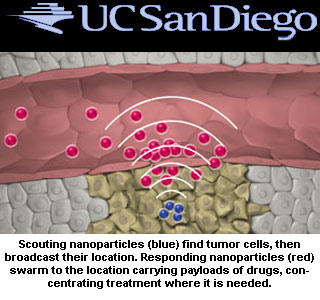
The system utilizes communication pathways of the body that coagulate blood and collect drugs where they are required. Nanoparticle sentry locates the tumor and then presents its location by initiating the natural biochemical series. Responsive nanoparticles incorporated with drugs or markers that would help a surgeon spot the boundaries of a tumor, would comprehend the signal and horde towards the tumor.
“We engineered a set of nanoparticles that trigger the body to grow blood clots around tumors. A second set of nanoparticles that recognizes the blood clots then delivers a dose of anti-cancer drug to the tumor,†specified Michael Sailor, professor of chemistry and biochemistry at UC San Diego.
Scientists say that that the main objective in using combinations of two different nanoparticles was to decrease the amount of drug administered while gauging its ability to treat the disease. The reactive nanoparticles trigger the ability of the drug-carrying nanoparticles to home the tumor.
In one of the mechanisms developed, the interacting nanoparticles delivered 40 times more amount of drug to the tumor site pitted against those which were non-responsive. Enhanced targeting should increase the effectiveness of a drug while reducing the side effects.
The cells in the human body have many methods to communicate with each other. Scientists believe that this work apparently shows that such artificial system can be programmed to set up similar communication links in the body.
The research will be is published online on July 19 in the journal Nature Materials.
